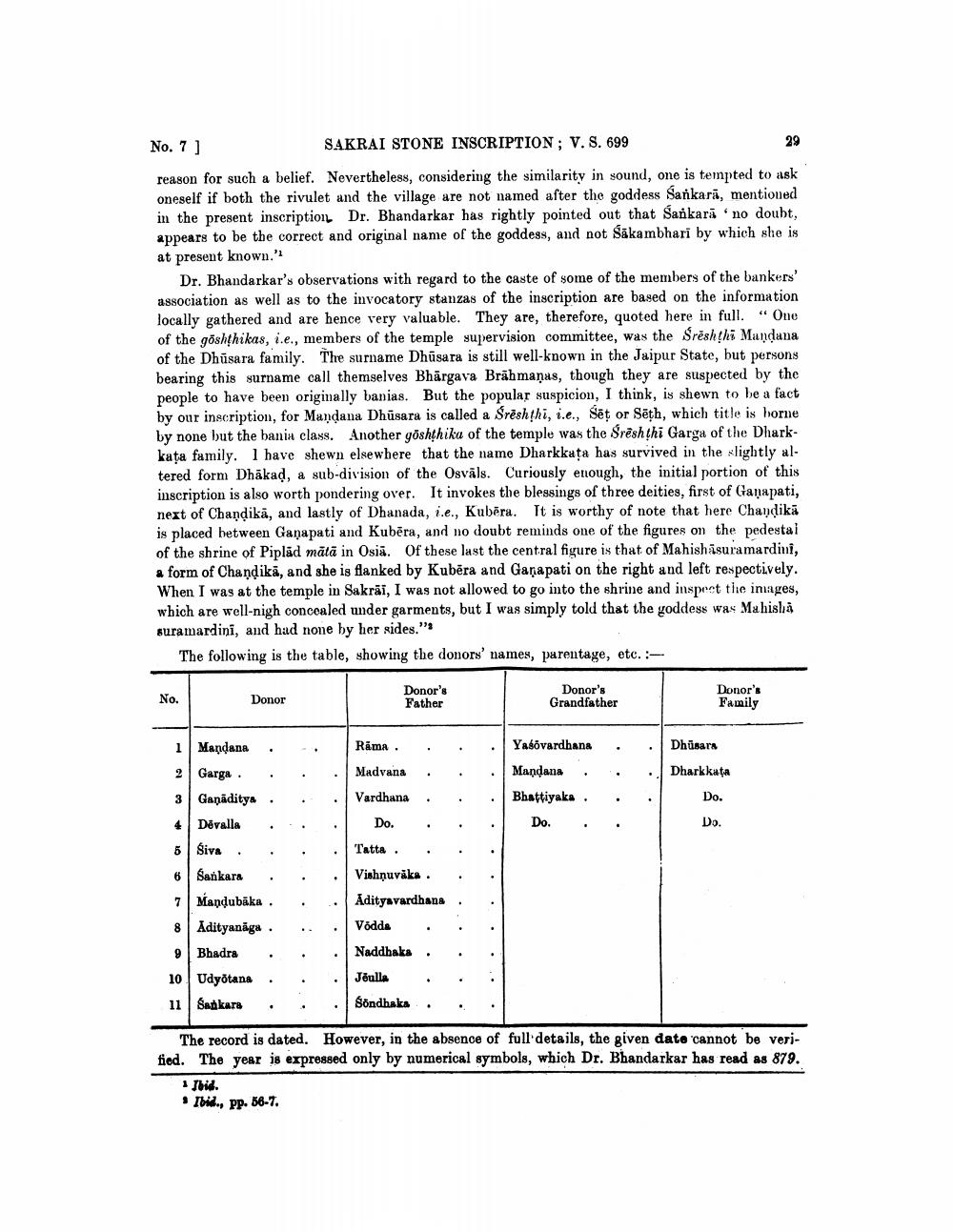________________
No. 7]
SAKRAI STONE INSCRIPTION: V. S. 699 reason for such a belief. Nevertheless, considering the similarity in sound, one is tempted to ask oneself if both the rivulet and the village are not named after the goddess Sankara, mentioned in the present inscription Dr. Bhandarkar has rightly pointed out that Sankara no doubt, appears to be the correct and original name of the goddess, and not Sākambhari by which she is at present known.'
Dr. Bhandarkar's observations with regard to the caste of some of the members of the bankers' association as well as to the invocatory stanzas of the inscription are based on the information locally gathered and are hence very valuable. They are, therefore, quoted here in full." One of the goshthikas, i.e., members of the temple supervision committee, was the Sreshthi Mandana of the Dhūsara family. The surname Dhūsara is still well-known in the Jaipur State, but persons bearing this surname call themselves Bhargava Brāhmaṇas, though they are suspected by the people to have been originally banias. But the popular suspicion, I think, is shewn to be a fact by our inscription, for Mandana Dhūsara is called a Sreshthi, i.e., Sēt or Sēth, which title is horne by none but the banin class. Another goshthika of the temple was the Sreshthi Garga of the Dharkkata family. I have shewn elsewhere that the name Dharkkuta has survived in the lightly altered form Dhakad, a sub-division of the Osvāls. Curiously enough, the initial portion of this inscription is also worth pondering over. It invokes the blessings of three deities, first of Ganapati, next of Chandika, and lastly of Dhanada, i.e., Kubēra. It is worthy of note that here Chandikā is placed between Ganapati and Kubēra, and no doubt reminds one of the figures on the pedestai of the shrine of Pipläd mātä in Osiä. Of these last the central figure is that of Mahishasuramardini, a form of Chandikā, and she is flanked by Kubera and Ganapati on the right and left respectively. When I was at the temple in Sakrai, I was not allowed to go into the shrine and inspect the images, which are well-nigh concoaled under garments, but I was simply told that the goddess was Mahisha suramardini, and had none by her sides."
The following is the table, showing the donors' names, parentage, etc. :
No.
Donor
Donor's Father
Donor's Grandfather
Donor's Family
.
Dhūsara Dharkkuta
. .
. .
Yabovardhana Mandana . Bhattiyaka .
Do. .
. . .
Do.
.
Do.
.
Mandana , Garga . . Ganāditya.
Dévalla 5 Siva . 6 Sankara .
Mandubāka. 8 Adityanaga . 9 Bhadra 10 Udyotana . 11 Sankara ,
Rima. Madvana . . Vardhana. .
Do. . Tatta . . Vishņuvāka . . Adityavardhana. Vödda Naddhaka. . Jõulla Śöndhaka . .
..
.
The record is dated. However, in the absence of full details, the given dato 'cannot be verifiod. The year is expressed only by numerical symbols, which Dr. Bhandarkar has read as 879.
Jbid. • Ibid., PP. 66-7.




